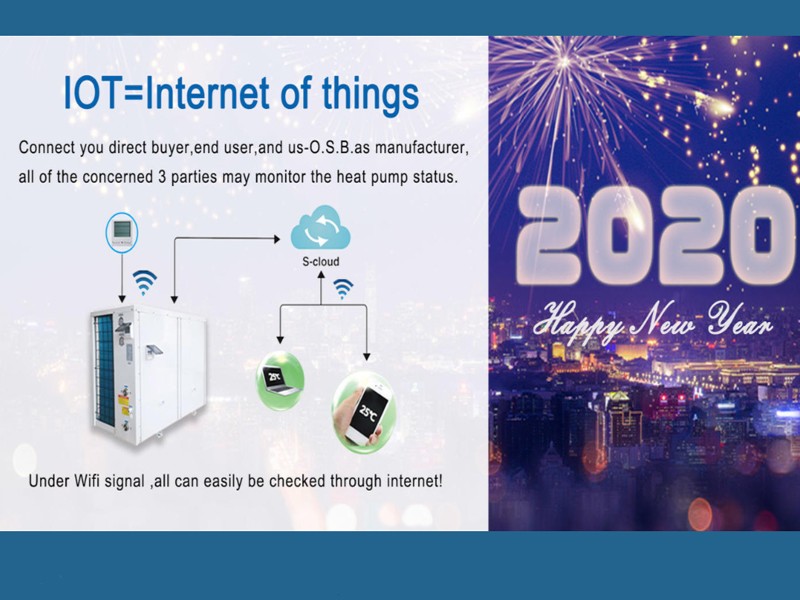
3. Fault reflection: high temperature fault occurs during unit operation. Field situation: after the unit has been running for a period of time, the water temperature cannot rise, and a high temperature alarm will appear after half an hour of operation. Fault analysis: after a period of operation, check that the evaporation temperature of the unit is always close to the ambient temperature, and the exhaust temperature rises slowly. The current of the detection unit is too small, no pressure is found in the unit system when connecting the pressure gauge, so it is judged that the unit has fluorine leakage, and the connection between the copper pipe and the water tank is found to have oil stains, so it is judged that there is fluorine leakage here. After reconnection, vacuum and inject fluorine. The unit can operate normally. Solution: refill the refrigerant.
4. Fault response: the unit fails to start due to tripping during commissioning. Field situation: now the compressor does not start after the unit is powered on, and the main gate trips. Fault analysis: check all power lines, no short circuit and wrong connection is found in the main circuit, and no looseness is found in other lines; open the compressor junction box, check the lines and find that the compressor terminal falls off, and after rearrangement, the operation is normal after fixing the terminal. Due to the unfixed production process or vibration during transportation, the compressor terminals fall off, resulting in a short circuit when the compressor is powered on together, so the phenomenon of tripping occurs. Solution: arrange the circuit and fix the terminal block.
5. Fault response: unable to make up water normally. On site condition: the maintenance personnel found that the heating operation of the unit is normal and the water level display is normal, but after the water level is lower than the set water level, the solenoid valve cannot be opened normally and the water can not be replenished. Fault analysis: pull up the water level, check the solenoid valve line pile in the unit, check that the power supply can be normal, and then check the solenoid valve coil resistance value, which is normal. When opening the solenoid valve, it is found that impurities enter the solenoid valve, which causes the solenoid valve to be stuck and cannot be opened normally. After cleaning the solenoid valve, it can be opened and operated normally. Solution: clean the solenoid valve.
6. Fault response: high voltage fault is displayed. On site condition: the on-site maintenance personnel found that the unit operated for a period of time and then displayed the high-voltage fault. Fault analysis: after the unit operates for a period of time, the fault is reported, which can be basically judged as the condensation side problem. Check whether the water tank is short of water. Check the filter and find that there are a lot of dirt in the filter. Therefore, the fault is caused by the insufficient water flow caused by the blockage of the pipeline. After cleaning the filter, the unit can operate normally. Solution: clean the filter to ensure the circulating water flow.
7. Fault response: the unit does not make heat. Field situation: the field maintenance personnel found that the panel temperature showed 50 degrees, and the actual water temperature was low. Fault analysis: drain out the water in the water tank and find that it is obviously inconsistent with the panel temperature. Measure the resistance value of the water tank probe and find that the resistance value display is abnormal. After replacing the water tank probe, the water temperature display is 25 ℃, and the unit works normally. Solution: replace the water tank probe.
8. Fault response: the unit is unable to make heat. Field situation: the panel shows the fault of wrong phase. Fault analysis: wrong phase fault, i.e. the phase sequence of three live wires supplied by the host is wrong. After the phase sequence is adjusted, the unit works normally. Solution: adjust the phase sequence of the unit.

